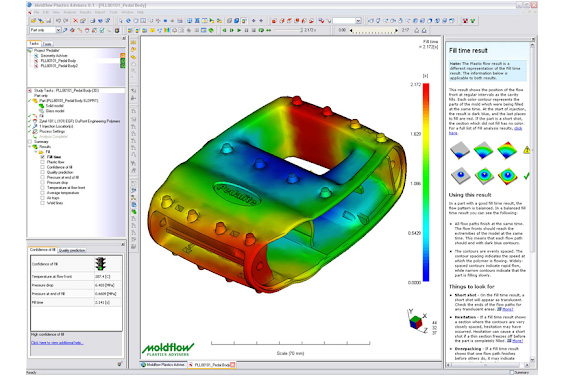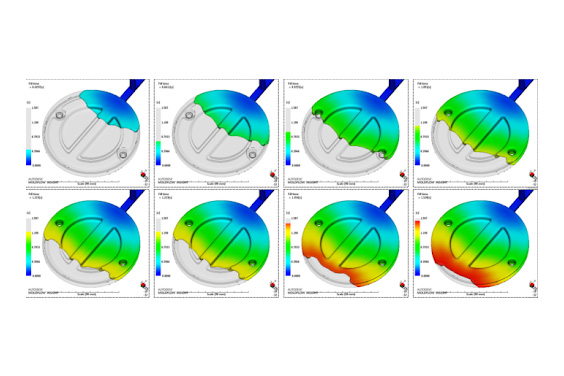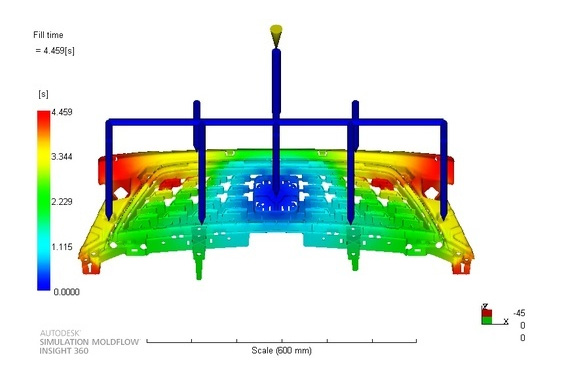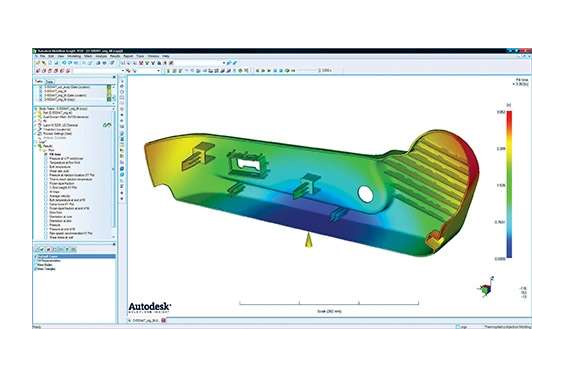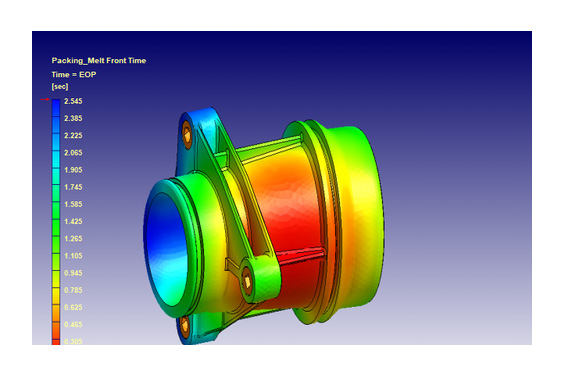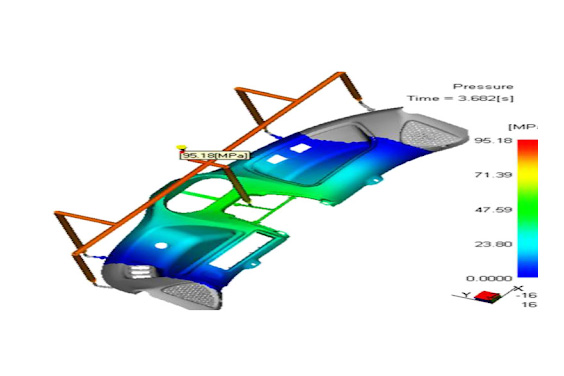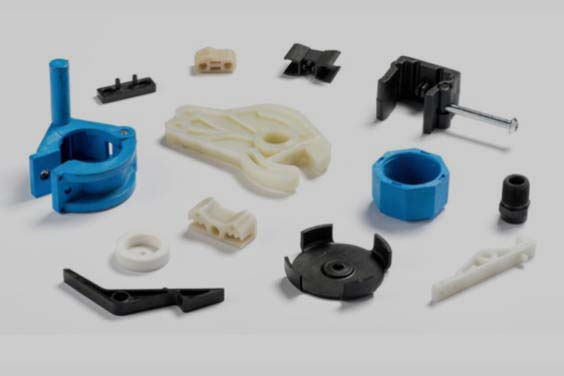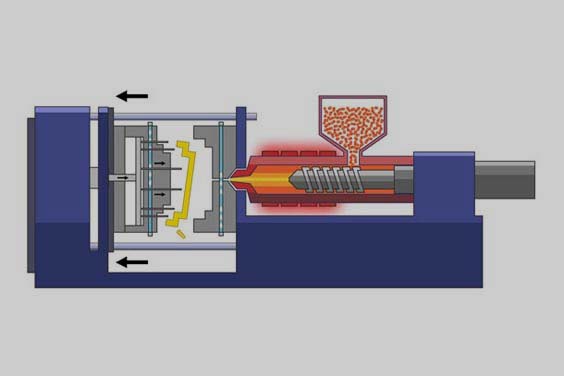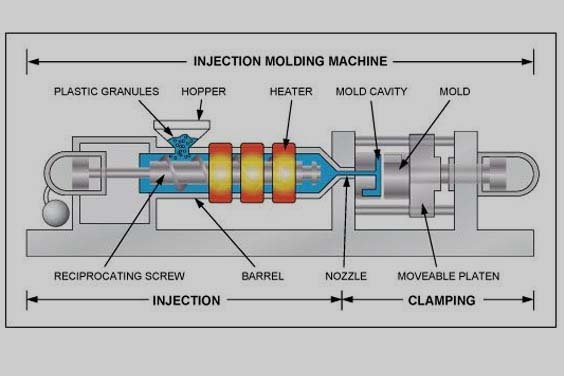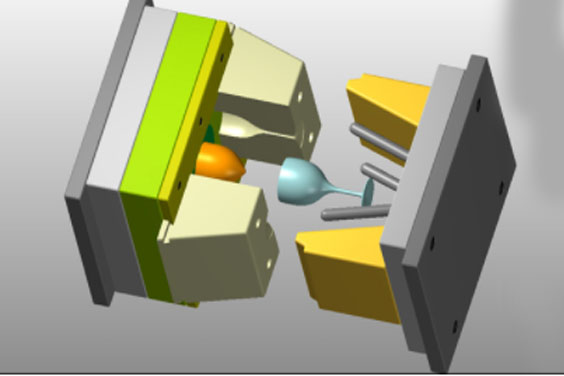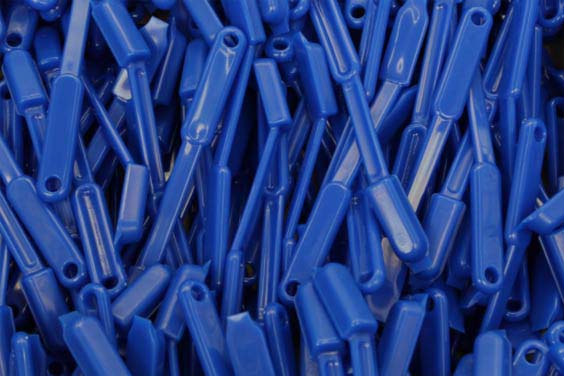
Why Mold Flow Analysis, Dfm & Dft Are Critical For Injection Molding
- Home
- > Blog
Share :
Share :
Mold flow analysis is an important step in the injection molding process, however it is often overlooked. It is an absolutely important step when a mass production is going to take place. In this article, we will talk about Mold Flow Analysis, DFM, DFT; their importance and benefits.
MFA is defined as the process of stimulating a cycle of injection molding with a particular type of material and then analysing the end product. This is done with the help of a specialised software that produces the design of the product that is to be manufactured. This step can save a lot of effort as well as costs down the road.
What is Mold Flow Analysis?
Mold Flow Analysis or MFA facilitates the flow of plastic, which allows you to elevate parts and mold design to produce products without compromising on the quality. Further, Mold Flow Analysis allows you to have a look at how the material that you have chosen, would fill the mold’s cavities. It also shows you the potential faults that can occur during or after the process.
Benefits of Mold Flow Analysis
The benefits of Mold Flow Analysis include:
- Helps in optimizing Gate location
- Increases efficiency and the quality as well
- Potential problem spots can be easily identified
- Speed of manufacturing is enhanced
- The cavities in the molds are filled evenly and smoothly
- Decreases the possibility of tooling errors
Importance of Mold Flow Analysis
As we discussed in the earlier paragraphs, MFA or Mold Fold analysis’s importance lies in its function of pointing out the flaws beforehand that prevent an enormous economic blow to manufacturers.
This process of finding flaws in the injection mold design not only saves time but also the money that would have otherwise been spent on rework. Also, the color maps created using Mold Flow Analysis helps to implement any changes in the design changes once the potential faults are seen. As a result, only quality products are made.
What is Design For Manufacturing and Design for Testing?
The consumer sector is highly affected by the reliability factor of the products. Simulation and experimentation are used by a designer to ensure the operational quality of the end product. A good design must satisfy the requirements of a PCB and provide the required provisions for carrying out those functions.
Design for manufacturing (DFM)
A design for manufacturing or manufacturability report helps to detect the possible faults before the product is sent to the stage of production. To create a Design For Manufacturability report, the CM engineers assess the product and give it a green signal once they find everything is correct. Over here, the CM engineers play a major role as they check every aspect of the product to avoid any rework or wastage of time.
In the Design For Manufacturability stage, the CM examines everything about the product, including its components, design details, production plans, and other components to reduce the chances of rework. A good CM ensures that everything is in line and instructions are being communicated so that the final plastic mold design satisfies the expectations of the customers while yielding a highly reliable product.
Design for Testing
Design for Test or Testability takes place before production. The main aim of Design for Testing is to find out potential testing problems at an early stage and put efforts to rectify them before it wreaks havoc with the company’s finances.
Design For Testability of DFT includes various testing strategies which are aimed to find the possible manufacturing defects. Performing DFT tests can help in coming up with an error-proof testing strategy.
Also, Design for Manufacturability and Design for Testability reports do not follow the “one size fits all” formula. These reports are regularly updated, reviewing the design, assimilation, and testing procedures to ensure that the end product is flawless.
Benefits of Design for Manufacturing and Design for Testing
These periodic checks are essential; otherwise, the company may lose out on its manufacturers and potential customers. These Designs for manufacturing and Design for testing reports scrutinize the process to check for human errors, flaws, mistakes in the plastic injection mold design and immediately get them rectified.
Furthermore, nobody would want to pay for the mistake of the CM, so examining the project at every step becomes crucial. There are a few benefits of both design for manufacturing and design for testability reports, and they are as follows:
- The product delivered to the customer would be risk-free
- This helps minimize getting involved in processes that contribute little to no to the final process
- Looking for errors and fixing them promptly before the products are sent for production
- This also ensures top tier production quality and consistency
- Regular and comprehensive checks of customer design or ideation drafts to avoid any major slip up at a later stage
- Printed circuit board assembly design is gone over with a fine-tooth comb to maintain precision and yield an error-free product
Why Design for Manufacturing and Design for Testability is Essential for Injection Molded Parts?
Plastic is one such material that has good mechanical properties. Also, it is lighter than metal and thus it is actively used for making furniture molding. The material also provides the right amount of toughness to help the product function properly. Injection molding is a commonly used manufacturing process. However, owing to its intricacies, the designers need to consider various design constraints to ensure that the design is entirely focused on maximizing the molding performance and reducing the tool costs.
Design for Manufacturing and Design for testability are the two tests that are performed by designers to ensure that design does not have any flaws and the end product will satisfy the needs of the customers.
Design For Manufacturing importance
Design for manufacturability or DFM report, as stated above, ensures that the final product made from the customized plastic mold has no flaws. The advantages of design for manufacturing are given below:
- Reduces overall production costs
- Minimizes equipment costs that wouldn't be of any use in the long run
- The production takes place at an increased pace
- Lower material and human labor costs
- The production cycle gets shortened, as mentioned in the earlier points; this implies fast mass production time, which can save a lot of time
- Greater automation potential
- The quality of the product delivered is immaculate
Design For Testability importance
Design for Testability is equally essential. The importance of running this test is given as follow:
- Performing these test makes us aware of potential design issues that could lead to structural integrity issues of Printed Circuit Board
- These reports by the injection mold designer give us a sneak peek into the Printed Circuit Board
- Design for testability enables design teams to go over the layout once again to check if there's something that can be improved in test access for the final printed circuit board
- Since this report helps catch the design issues at early stages, the cost of production is much lesser and the manufacturers can save both time and money which would have otherwise been wasted due to rework.
Factors That Call For Performing These Reports
Among all the best practices that an electronic contract manufacturer or a CM must adhere to, the best factor to help identify the best CM is Design for Manufacturability and Design for Test. These reports ensure quality control, customer’s satisfaction and predictable budget for manufacturing the products.
There are multiple factors that call for performing these Design for Testability reports from the plastic mold designer on Printed circuit boards or PCB, and these factors are given below:
- Printed circuit boards are becoming dense with various components or connections
- New SMT techniques also call for these reports
- There are other printed circuit board parameters and requirements as well that make the conduction of design for testability report necessary
Not taking these factors into consideration can gravely affect the manufacturers and the ultimate consumers as well. Therefore, ensuring that design for testability and design for manufacturability is carried out becomes vital.
Table of Contents
Conclusion
Seventy percent of the manufacturing costs of a product, in the production cycle of a PCB is determined at the initial stages, which is also called the design stage of the cycle. DFM and DFT are two methods that ensure quicker time to market the product at lower costs and the functional reliability of the end product.
Also, when these reports aren’t performed, the end product may have some faults that may cause you to lose out on your potential customers. We hope that by now you are aware of factors that make it necessary to perform the reports for the plastic injection molding service as mentioned above.

